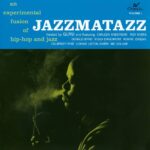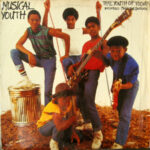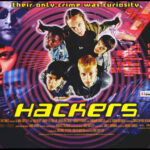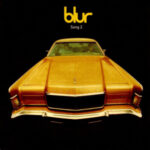 When Jazzmatazz, Vol. 1 was released in 1993, it marked a groundbreaking moment in music history. The album was more than just a collection of songs—it was a deliberate and visionary fusion of two seemingly different yet intrinsically connected genres: hip-hop and jazz. Guru, already a legend as one-half of Gang Starr, sought to elevate hip-hop’s connection to jazz beyond sampling, bringing in live instrumentation and direct collaborations with jazz luminaries. The result was an album that not only pushed boundaries but also stood as a testament to the power of musical evolution and cross-genre experimentation.
When Jazzmatazz, Vol. 1 was released in 1993, it marked a groundbreaking moment in music history. The album was more than just a collection of songs—it was a deliberate and visionary fusion of two seemingly different yet intrinsically connected genres: hip-hop and jazz. Guru, already a legend as one-half of Gang Starr, sought to elevate hip-hop’s connection to jazz beyond sampling, bringing in live instrumentation and direct collaborations with jazz luminaries. The result was an album that not only pushed boundaries but also stood as a testament to the power of musical evolution and cross-genre experimentation.
In this deep dive, we’ll explore the origins of Jazzmatazz, Vol. 1, analyze its tracks, examine its critical reception, and discuss its enduring legacy in the worlds of hip-hop and jazz.
The Origins of Jazzmatazz
By the early 1990s, hip-hop was already heavily influenced by jazz. Artists like A Tribe Called Quest, De La Soul, and Guru’s own group, Gang Starr, frequently sampled jazz records, infusing their beats with a rich, organic sound that stood in contrast to the mechanical drum machines dominating mainstream rap. Guru, however, wanted to take this relationship further. Instead of sampling, he sought to create original compositions by working directly with jazz musicians.
Guru (born Keith Edward Elam) had long been a proponent of “intelligent” rap. He believed in the power of lyrics to educate and inspire, and Jazzmatazz, Vol. 1 was a logical extension of that philosophy. Rather than relying solely on DJs and producers to create beats, he enlisted an ensemble of world-class jazz musicians to provide live instrumentation, fusing jazz’s improvisational spirit with hip-hop’s rhythmic precision.
To bring his vision to life, Guru collaborated with jazz legends such as Donald Byrd, Roy Ayers, Branford Marsalis, and Lonnie Liston Smith. He also brought in R&B and soul vocalists, ensuring the album had a well-rounded, multi-dimensional sound that transcended both jazz and hip-hop alone.
Track-by-Track Analysis
1. “Introduction”
Guru opens the album with a spoken-word introduction, explaining the concept behind Jazzmatazz. He sets the stage for what’s to come, making it clear that this isn’t just another hip-hop album—it’s an experiment, a fusion, and a tribute to jazz’s influence on black music and culture.
2. “Loungin’” (feat. Donald Byrd)
One of the album’s standout tracks, “Loungin’” is the perfect encapsulation of Jazzmatazz’s mission. The smooth, laid-back instrumentation, provided by jazz trumpeter Donald Byrd, creates a mellow groove that complements Guru’s relaxed yet authoritative flow. The song exudes sophistication, making it an instant classic among jazz and hip-hop fans alike.
3. “When You’re Near” (feat. N’Dea Davenport)
With the soulful vocals of N’Dea Davenport (of The Brand New Heavies), “When You’re Near” takes on a more romantic tone. Guru’s lyrics remain poetic and introspective, while the instrumentation, featuring smooth keyboard work and a steady drum groove, bridges the gap between jazz, soul, and hip-hop.
4. “Transit Ride” (feat. Branford Marsalis)
Branford Marsalis’ saxophone work shines on this track, creating a dynamic interplay between jazz improvisation and Guru’s steady, spoken-word-like flow. The song feels like a nighttime ride through the city, its moody atmosphere perfectly capturing the essence of urban jazz-hop.
5. “No Time to Play” (feat. Ronny Jordan and Dee C Lee)
With a catchy guitar riff from Ronny Jordan and an infectious chorus by Dee C Lee, “No Time to Play” is one of the more accessible tracks on the album. Despite its radio-friendly appeal, Guru’s message remains socially conscious, speaking to the pressures of life and the need for focus in an increasingly chaotic world.
6. “Down the Backstreets” (feat. Lonnie Liston Smith)
Lonnie Liston Smith’s ethereal piano work adds a dreamlike quality to this introspective track. Guru reflects on the struggles of inner-city life, painting vivid pictures of hardship, resilience, and survival. The jazzy arrangement gives the track a somber yet hopeful undertone.
7. “Respectful Dedications”
An interlude that serves as a heartfelt tribute to the jazz legends who inspired the album, Guru name-drops some of the greatest musicians of all time, reinforcing the project’s deep respect for its musical predecessors.
8. “Take a Look (At Yourself)” (feat. Roy Ayers)
With vibraphone master Roy Ayers adding his signature sound, “Take a Look” delivers a message of self-reflection and personal growth. The track’s warm, shimmering production perfectly complements Guru’s wise, measured delivery.
9. “Trust Me” (feat. N’Dea Davenport)
A return to a more soulful sound, “Trust Me” highlights the chemistry between Guru and N’Dea Davenport. The song’s message—about the importance of honesty and integrity—resonates deeply, backed by lush instrumentation that feels effortlessly smooth.
10. “Slicker Than Most” (feat. Gary Barnacle)
A saxophone-heavy track with a fast-paced rhythm, “Slicker Than Most” sees Guru flexing his lyrical skills over a tight jazz arrangement. The interplay between the instrumental flourishes and Guru’s confident flow makes this a standout moment on the album.
11. “Le Bien, Le Mal” (feat. MC Solaar)
A bilingual masterpiece, this collaboration with French rapper MC Solaar showcases hip-hop’s global reach. The fusion of English and French lyrics over a jazzy, hypnotic beat exemplifies how Jazzmatazz was more than just an album—it was a cultural bridge.
12. “Sights in the City” (feat. Courtney Pine and Carleen Anderson)
Closing the album, “Sights in the City” is a cinematic exploration of urban life. With rich instrumentation and a deeply narrative style, the track serves as a fitting conclusion to a project that celebrates the intersection of music, storytelling, and culture.
Critical Reception and Commercial Performance
Upon its release, Jazzmatazz, Vol. 1 received widespread acclaim from both hip-hop and jazz critics. Many praised its innovation and execution, noting that Guru had successfully created something entirely new. While some traditionalists were skeptical of merging jazz with hip-hop, others saw it as a natural evolution of both genres.
Commercially, the album performed well, particularly in Europe, where jazz remained deeply influential. In the U.S., it reached #94 on the Billboard 200 and #15 on the Top R&B/Hip-Hop Albums chart. The singles “Loungin’” and “No Time to Play” became underground hits, solidifying Jazzmatazz’s status as a cult classic.
Legacy and Influence
More than three decades later, Jazzmatazz, Vol. 1 remains one of the most important crossover albums in music history. It laid the foundation for future jazz-hip-hop collaborations, influencing artists such as The Roots, Kendrick Lamar, and Robert Glasper. The album’s emphasis on live instrumentation also helped shift hip-hop’s production style, encouraging more organic, band-driven sounds in an era dominated by sampling.
Guru would go on to release three more Jazzmatazz albums, but the first remains the most revered. His vision of uniting jazz and hip-hop wasn’t just a passing experiment—it was a blueprint for the genre’s evolution.
Conclusion
Jazzmatazz, Vol. 1 stands as a timeless masterpiece that blurred the lines between hip-hop and jazz. Guru’s ability to merge two powerful musical traditions into a seamless, organic sound was nothing short of revolutionary. Whether you’re a fan of rap, jazz, or both, this album is essential listening—a testament to the limitless possibilities of musical fusion.
This post has already been read 78 times!









